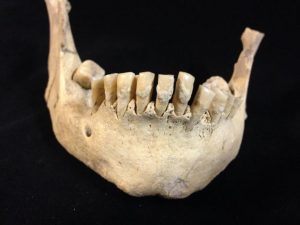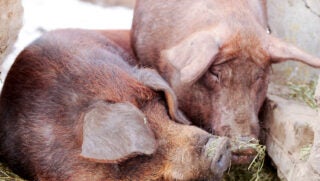Not only is dairy delicious, it’s hard to beat as far as its nutrient profile goes. And new research shows that humans have had an appreciation for dairy at least as far back as the Neolithic period — or roughly 6,000 years-ago.
A research team, led by archaeologists at the University of York, identified a milk protein called beta lactoglobulin (BLG) entombed in the mineralised dental plaque of seven prehistoric British farmers. It’s the earliest direct evidence of milk consumption anywhere in the world.
The Neolithic period in Britain saw the emergence of farming, with the use of domesticated animals such as cows, sheep, pig, and goats, alongside crops such as wheat and barley. Archaeologists have also discovered evidence of complex cultural practices, with Neolithic communities building large monumental and burial sites.
The ancient human remains tested in the study come from three different Neolithic sites — Hambledon Hill and Hazleton North in the south of England, and Banbury Lane in the East Midlands. Individuals from all three sites showed the presence of milk proteins from cows, sheep, or goats, suggesting people were using dairy products from multiple species.
Dental plaque can offer unique insights into the diets of ancient people because dietary proteins are entrapped within it when it is mineralised by components of saliva to form tartar or “dental calculus.”
Though the people of that era didn’t know all the details, dairy milk is known to be an excellent source of many vitamins and minerals, including calcium, riboflavin, vitamin B12 and phosphorous, and a good source of protein, vitamin A, vitamin D, and zinc.

Lead author of the study, Dr. Sophy Charlton, from the Department of Archaeology at the University of York, said: “The fact that we found this protein in the dental calculus of individuals from three different Neolithic sites may suggest that dairy consumption was a widespread dietary practice in the past.
The discovery of milk proteins is particularly interesting as recent genetic studies suggest that people who lived at this time did not yet have the ability to digest the lactose in milk. To get around this, the ancient farmers may have been drinking just small amounts of milk or processing it into other foodstuffs such as cheese (which removes most of the lactose), the researchers say.
“It would be a fascinating avenue for further research to look at more individuals and see if we can determine whether there are any patterns as to who was consuming milk in the archaeological past — perhaps the amount of dairy products consumed or the animals utilized varied along the lines of sex, gender, age or social standing,” Charlton said.


